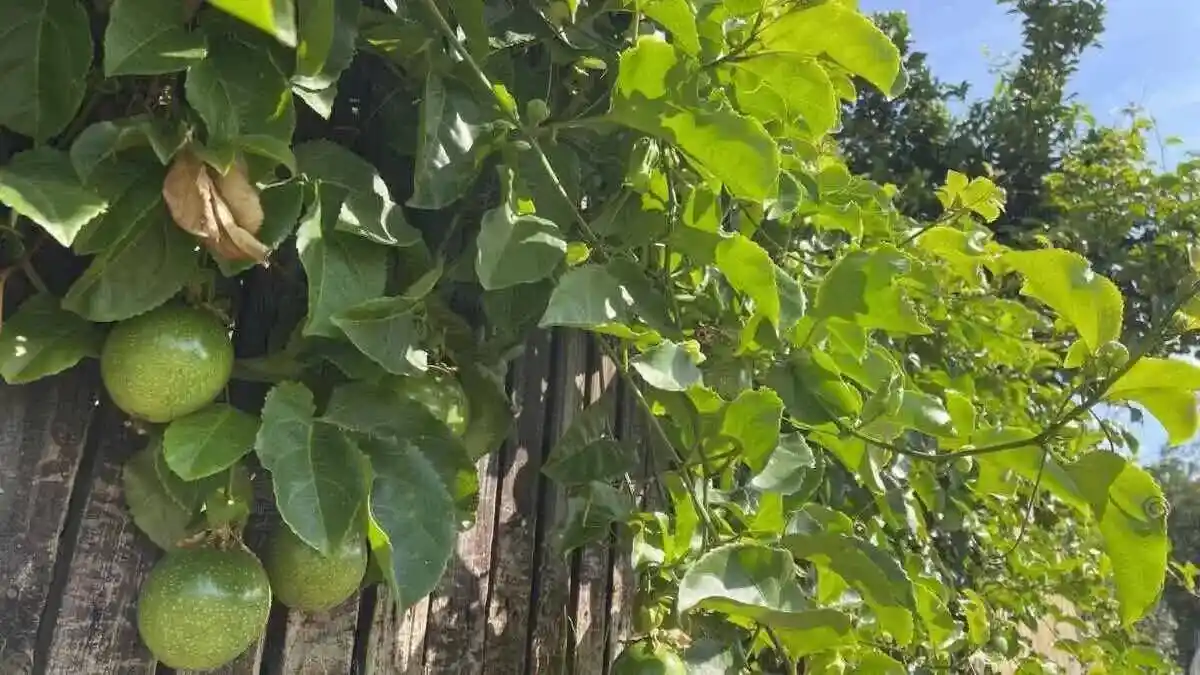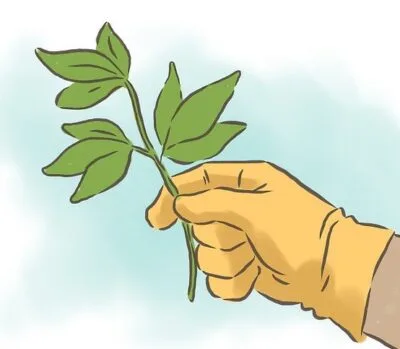Table of contents
Passion Fruit Growing Zone
This passion fruit growing guide will help you grow a vigorous tropical vine, so you can harvest bucket loads of your own passion fruit. Growing well in tropical gardens, the passion fruit is a type of climbing vine that can live up to 10 years. It also grows well in the sub-tropics.
The botanical name for the passion fruit is passiflora edulis. Indeed it is a vine species of the passion flower family (passifloraceae) originating in South America (native to Venezuela through Paraguay and northern Argentina). Passion fruit is also grown commercially in tropical and subtropical regions for its sweet, seedy fruit.
Passion Fruit Varieties
The most popular varieties of this tropical vine are the purple and the yellow. Indeed the yellow has more vigorous vine growth and grows extremely well in tropical lowlands. Furthermore, yellow panamas are the best variety to grow in tropical locations such as Far North Queensland.
The purple is richer in aroma and flavour, and has a higher proportion of juice 35 – 38%. However, we actually prefer eating the yellow, but it is a matter of taste.
Passion Fruit Growing Time
Passion fruit vines generally take about 12 to 18 months from planting to produce their first fruits. This timeline can vary based on growing conditions, such as climate, sunlight, and soil quality. Grafted passion fruit plants may produce fruit faster, often in less than a year, while those grown from seeds may take longer.
Passion Fruit Growing Conditions
This plant likes well draining soil. A sandy loam soil is perfect. If you have more of a heavy clay soil (as I do) find a part of your property that drains well and locate your plant there.
If you are planting a seedling you have purchased, firstly, make the hole you dig two times as wide and the same depth as the root-ball. Then remove your plant from the container, place in the hole and backfill with soil.
This plant likes full sun. However, if you plant it in a shady location it will grow towards any nearby sunshine and spread there.
Passion Fruit Growing from Seed
If you have a passion fruit you want to grow (your preferred variety) first check that variety grows true to seed before you begin.
You can grow passion fruit from seed by taking the following steps:
1. First, select a passion fruit that grows true to seed.
2. Obtain a ripe passion fruit (one that is slightly crinkled) and cut it in half.
3. Wash out the fruit pulp from the seeds and dry them on a paper towel.
4. Sow your seed just below the surface and water it regularly to make sure the soil remains moist.
5. Place your pot is a sunny location and water regularly.
6. Make sure you transplant to another sunny location, where there is room for your vine to grow. It will need a trellis, fence or other trees to grow over.
Passion Fruit Growing Stages
Time needed: 4 minutes
How do I grow passion fruit from cuttings?
- Take cutting
Take a cutting about 15cm (6in) long from your mature vine and take it back to your potting table.
- Remove bud
Cut below the second or third mature leaf of the cutting.
- Apply Rooting Hormone
Remove the now first mature leaf and any tendrils or flower buds with it and dip the cutting into rooting hormone so the hormone touches the wounds on the stem.
- Plant in a Pot
Transplant into a small pot around 12cm x 6cm (5in x 2.5in) full of premium potting mix.
- Sun and Water
Leave the pot in a sunny location and water regularly.
- Transplant
Make sure you transplant to another sunny location, where there is room for your vine to grow. So it will need a trellis, fence or other trees to grow over.
Growing Passion Fruit in Pots
When your seedling is roughly 10cm (4in) high, re-pot your plant in a larger pot, around 18cm (7 inches) in diameter.
However, before transplanting into the ground, apply a commercially available soil improver, or dig in well matured compost and/or matured manure. Then gently work the seedling free, taking care to protect the root system.
Water
Water in well and water weekly for six weeks as the plant becomes established. In addition, mulch around the base with sugarcane, lucerne or other organic material.
Water regularly throughout the dry season. However, during the tropical ‘wet’ it should be fine without any additional water.
Fertilising
Fertilising is one of our passion fruit growing tips. Provided soil is adequate, you need to fertilise just once each year, usually in spring. However, commercial growers or anyone seeking to have their vine fruit very heavily, should fertilise 4 times a year.
Consequently we use a liquid seaweed fertiliser to improve growth, flowering and fruiting.
How to Grow Passion Fruit on a Fence
Work out where you want your passion fruit to climb up. For example, you may locate your vine next to a fence, trellis or appropriate tree. The vine should find the nearby support all on its own. We plant near our fence and the vine grows all over it!
If you need to prune, stay away from the central core branch that emerges from the ground or pot. You can prune the branches that come out of that central branch if you need to do so.

Passion Fruit Growing Problems
The major pests and diseases are mites, fruit flies, aphids, mealy bugs, scales and brown spot disease. However, regular application of ‘white oil’ can help address these pests. Indeed, white oil is an effective organic pesticide that you can make at home.
Passion Fruit – The Fruit
The colour of the fruit is either yellow or purple.
The yellow passion fruit is round and about 6-7cm (2.5in) in diameter. In addition, it has a thick, waxy exterior, that becomes wrinkly as the fruit ripens. However, inside the fruit is filled with a pulp of orange-coloured juice and small, crunchy seeds.

Passion Fruit Growing – Health Benefits
The best part of passion fruit growing is eating the fruit. Indeed it is tasty and extremely healthy, some even describe it as a ‘super food’.
The yellow passion fruit contains riboflavin and niacin and is rich in amino acids. They also are higher in citric acid and carotene than the purple passionfruit. However, they have a lower ascorbic acid content.
Weight Loss and Diabetes
Consumption of passion fruit tea helps to reduce the levels of glucose in the blood. Consequently, adding the insulin filled bark of passion fruit to tea can help diabetics.
Fibre
Passion fruit contains a large amount of soluble fibre which can help to improve digestion. Consequently, it can help with constipation.
Immune System
The vitamin C in the fruit can boost your immune system.
Antioxidants
Furthermore, the fruit is one of the antioxidant foods that can assist in your physical and mental health.
Finally, thank you for reading and good luck growing passion fruit.
Other Tropical Fruits
- Black Sapote
- Custard Apple
- Dragon Fruit
- Grumichama
- Guava Tree
- Jaboticaba
- Kumquat Tree
- Mamey Sapote
- Mulberries
- Natal Plum
- Paw Paw
- Rambutan
- Star Apple
- Watermelon




Comments
4 responses to “Passion Fruit Growing Guide”
[…] Passion Fruit […]
[…] Passion Fruit […]
[…] Passion Fruit […]
[…] Passion Fruit […]